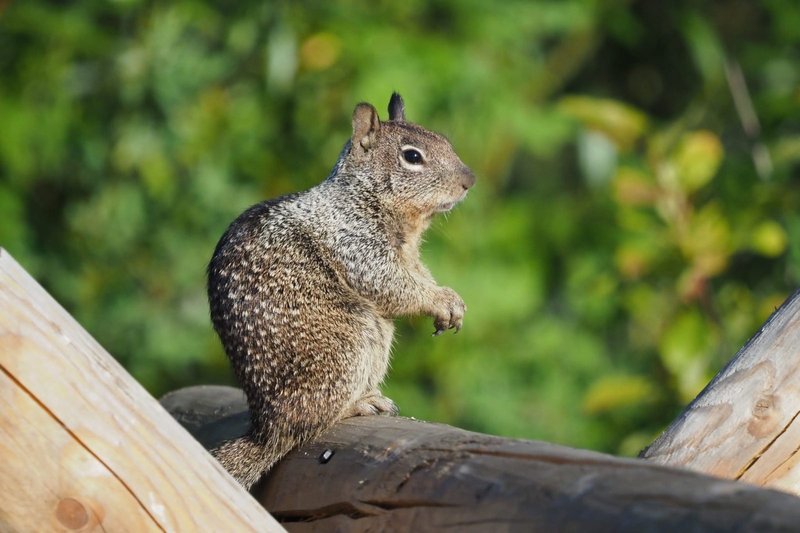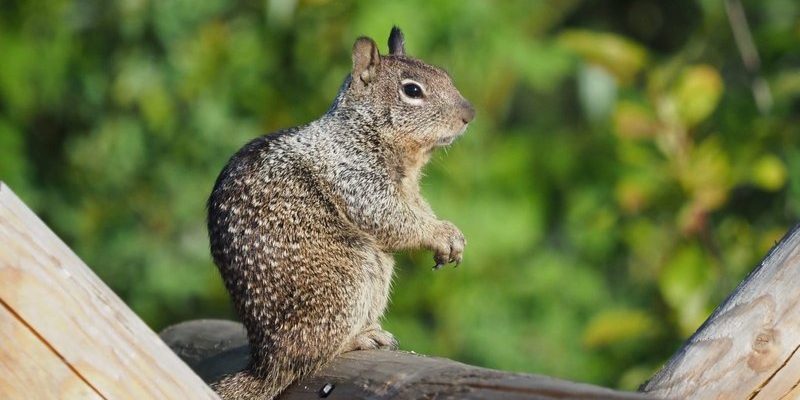
Ground squirrels are fascinating creatures with quirky behaviors and habitats. But they often find themselves misrepresented in media and conversations. With stories of them stealing picnic snacks or being pests, it’s easy to see why people might have a skewed perception. So let’s set the record straight. Grab your coffee, and let’s dive into some common myths about ground squirrels to see what’s true and what’s just chatter.
Myth 1: All Ground Squirrels Are Pests
One of the biggest misconceptions is that all ground squirrels are pests. Sure, they can raid gardens and picnic areas, but that doesn’t mean they’re all bad. Ground squirrels play a crucial role in their ecosystems. They help aerate the soil with their burrowing activities, allowing water and nutrients to reach plant roots better.
Plus, they serve as a food source for various predators, including hawks and foxes. So, while they might munch on your tomatoes occasionally, their presence benefits many other creatures in nature. Think of ground squirrels like the underappreciated helpers in our gardens. They may not be everyone’s favorite, but they do their part in the grand scheme of things.
Understanding Their Role in Nature
Ground squirrels are not just random nibblers in your garden; they are an essential part of the food web. Here are a few of their ecological roles:
- Burrowing: Their tunnels help aerate the soil.
- Food source: They provide meals for many predators.
- Seed dispersers: They often bury seeds that can sprout into new plants.
So before you label them as mere pests, consider their contributions to the environment!
Myth 2: All Ground Squirrels Are the Same
Another widespread belief is that all ground squirrels belong to one species. In reality, there are several species, each with its own unique traits and behaviors. For example, the California ground squirrel is quite different from the thirteen-lined ground squirrel.
These differences can be subtle, like size and color, or significant, like habitat preferences. California ground squirrels are often found in urban areas and are more accustomed to human interactions, while their thirteen-lined cousins prefer grasslands. Each species has evolved to adapt to its surroundings, which is pretty cool when you think about it.
Identifying Different Species
Curious about how to tell them apart? Here are some distinguishing features:
- California Ground Squirrel: Grayish-brown fur, often seen near roads and parks.
- Thirteen-Lined Ground Squirrel: Recognizable stripes along their back, found in fields.
- Richardson’s Ground Squirrel: More plains-dwelling, with light-colored fur and high-pitched calls.
Knowing these differences can help you appreciate the diversity of ground squirrels and understand their specific needs and behaviors.
Myth 3: Ground Squirrels Only Live in Groups
You might think of ground squirrels as always hanging out in large groups, but this isn’t the whole story. Some species are social and live in colonies, while others are more solitary. The California ground squirrel, for instance, tends to be a social being and loves that group dynamic. But the thirteen-lined ground squirrel often opts for a more private lifestyle, enjoying its own space.
Understanding these differences can reshape how we view their social structures. It’s not just black and white; it’s more like a colorful spectrum of social behavior.
The Social Dynamics of Ground Squirrels
Ground squirrels exhibit fascinating behaviors related to their social structures:
- Communication: They use a variety of vocalizations to alert others about predators.
- Social bonds: In colonies, they often groom each other and engage in playful behaviors.
- Territoriality: Solitary species will defend their burrow and food caches aggressively.
So, whether they’re more of the “social butterfly” type or the “lone wolf,” ground squirrels show us that there’s more to their interactions than meets the eye.
Myth 4: Ground Squirrels Hibernate
You might think that all small mammals hibernate during the winter, but ground squirrels are the exception to the rule. While they do enter a state of dormancy to survive the colder months, it’s not the same as full-blown hibernation. Instead, they experience a lighter form of sleep called torpor, where they can wake up more easily, especially during warmer days.
This means they might venture out occasionally, especially if the weather is mild, unlike true hibernators, who are tucked away and virtually oblivious to the outside world until spring.
Understanding Their Dormancy
So how does this dormancy work? Here’s a peek into their habits:
- Pattern: Ground squirrels will go into torpor during very cold periods.
- Active on warmer days: They can wake up for short periods to forage for food.
- Effects of climate: Warmer winters can alter their dormancy patterns, leading to more activity.
This behavior is just another example of how adaptable these creatures truly are.
Myth 5: Ground Squirrels Are Dangerous to Humans
You might have heard that ground squirrels can pose a danger to humans. Is that true? The short answer is: No, they’re generally not dangerous. In fact, they tend to avoid human interaction. The biggest risk with ground squirrels comes from them being carriers of diseases like hantavirus or plague. But this doesn’t mean they’re out to get you!
Simply put, the chance of contracting anything from being around them is quite low if you practice some basic safety measures, like keeping a safe distance and washing your hands after touching areas where they live.
Staying Safe Around Ground Squirrels
If you ever find yourself near these little guys, here are some tips to stay safe:
- Observe from afar: Enjoy watching them, but keep your distance.
- Don’t feed them: Feeding can make them lose their natural fear of humans.
- Keep your food secure: If you’re having a picnic, store food properly to avoid attracting them.
By being mindful, you can appreciate their presence without putting yourself or them at risk.
In conclusion, ground squirrels are fascinating creatures, full of surprises and misconceptions. Understanding these little guys better helps us appreciate their unique role in nature. From being vital players in their ecosystems to having varying social behaviors, they deserve a little more love and respect.
So the next time you spot a ground squirrel, take a moment to think about the myths that surround them. And remember, they’re more than just cute critters nibbling on your garden. They’re important members of our environment, doing their part—whether you realize it or not. Next time someone mentions ground squirrels, you can confidently share what you know and help bust some of those myths.

